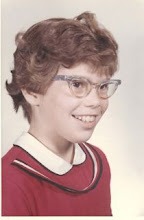Please join me in welcoming today's guest blogger, Sashi Kaufman. Sashi is a middle school English and science teacher who lives in Portland, Maine with her husband and daughter. She teaches science and English (not math) because she is curious about the world and not so much in quantifying it. Her life-long passion for reading led her to try her hand at writing for young adults. Her debut YA novel The Other Way Around hit the shelves on March 1st (she was my Friend Friday guest on March 14!). She is also an amateur trash picker.
Calling literature circles “Book Clubs” is a bit like calling gym class enforced aerobic exercise. They’re basically the same thing. But while my eighth grade students will moan and groan at being asked to participate in literature circles (and pretty much everything), they are more likely to give Book Clubs a chance.
Why? Book Clubs are clubs, and it’s fun to belong to a club. Maybe I’m taking advantage of the insecurity and desire to belong that seem to go hand in hand with adolescence but there are worse things I could do than use it to get them to read.
By the time most students have reached eighth grade chances are they’ve been asked to participate in a literature circle. They’ve gone through the traditional roles: discussion director, artful illustrator, etc. I’ve done traditional book clubs in this way but found that while students might spend a lot of time researching a vocabulary word or creating the perfect picture of the annex in The Giver, they missed out on the most important part of a literature circle: talking about the book.
It’s not easy to get students of any age to have an informal but substantive discussion about any book. I spend quite a bit of time pre-teaching how to ask good questions about books. I use the levels of questioning provided by the Keys to Literacy program. And I work with students to create questions which fall into the applying, analyzing, evaluating and creating categories. When they bring these types of questions to their book clubs, better quality discussion is always bound to ensue. I focus the book club meetings on sharing and responding to these questions.
Because I teach in Maine where all middle schools have one-to-one technology, I can use wikis and Google docs/forms to facilitate the gathering of information. This does make a big difference in the way they can share their ideas with each other and with me. Each group takes notes in a shared Google doc which they also share with me.
Because I teach in Maine where all middle schools have one-to-one technology, I can use wikis and Google docs/forms to facilitate the gathering of information. This does make a big difference in the way they can share their ideas with each other and with me. Each group takes notes in a shared Google doc which they also share with me.
Other things which help Book Clubs succeed where traditional literature circles may not:
- Accountability –students rate each other on level of participation prior to book club and during book club.
- Choice – students choose which books are most interesting to them (from 4-7 choices) and I’m always able to give everyone their first or second choice.
- And finally, and perhaps most importantly, food. Never to be over-looked, food is a huge part of any book club I’ve ever participated in. It works that way for kids too. Students take turns bringing in the book club snacks. I’ve seen groups take pride in providing the “best” snacks for their members. Food keeps things casual and fun, and it’s an additional way that they look forward to book club. Hopefully this creates positive associations that will keep them reading and talking about reading for life!
Thank you Sashi for sharing such specific and helpful tips for creating successful book clubs!




No comments:
Post a Comment